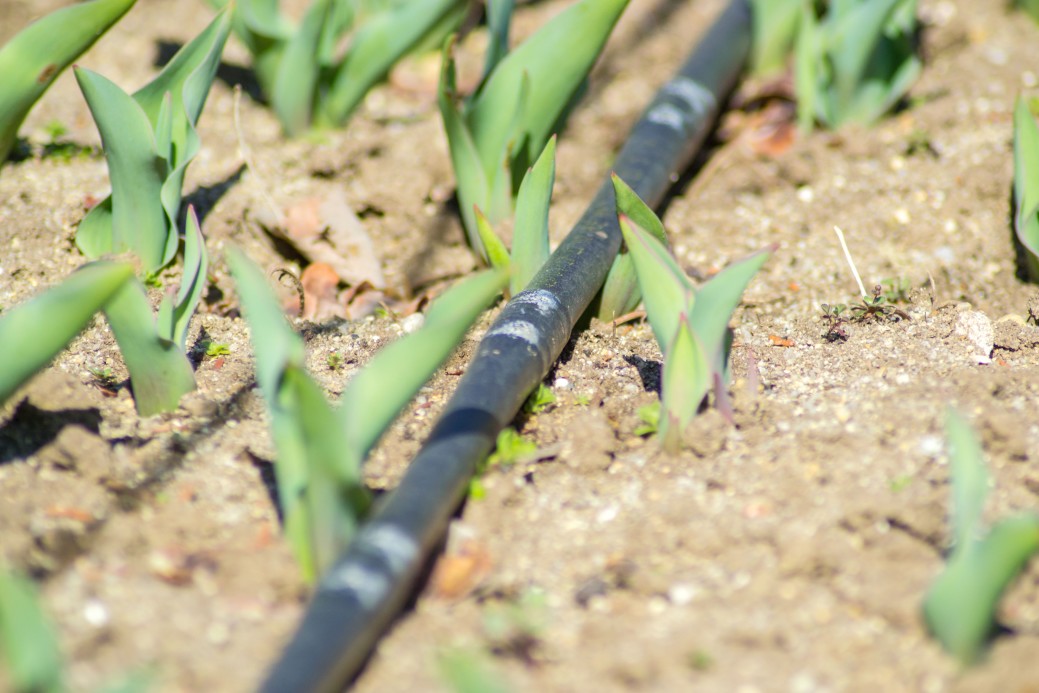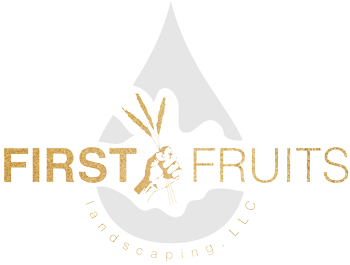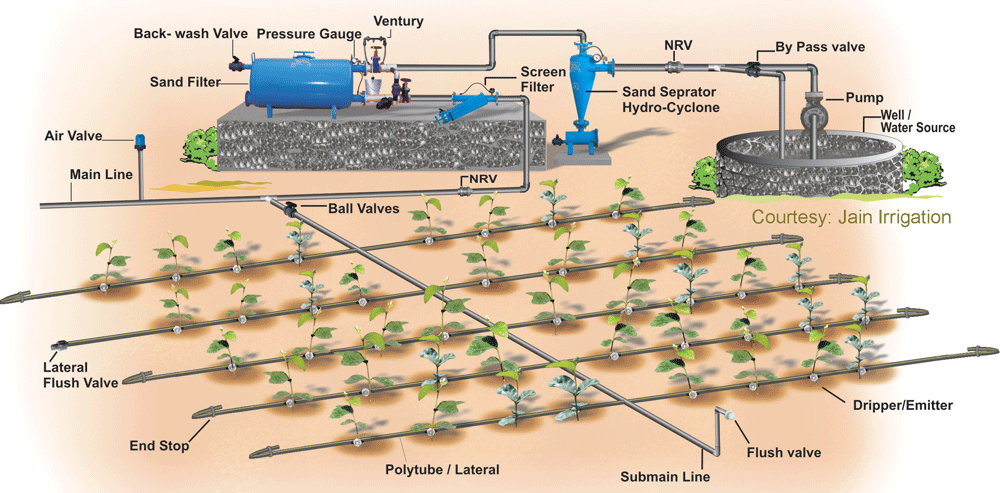Drip irrigation is definitely something I am a huge proponent of. Your landscaping, garden, and lawn can definitely benefit from drip irrigation but what is it and what are the benefits?
What is drip irrigation?
Drip irrigation is a type of micro-irrigation that can save water and nutrients by allowing the water to drip slowly into the roots of plants, vegetables, trees, and grass. The irrigation comes from above the soil surface or buried below. The goal is to water directly into the root zone and minimize as much evaporation as possible. Drip irrigation systems distribute water through a network of valves, pipes, tubing, and emitters and it can be more efficient than other types of irrigation systems such as sprinkler or surface irrigation.
A drip irrigation system has water in emitters to provide consistent and specified output over wide changes in elevation and pressure. Emitters that are plugin or are preinstalled will typically put out water at a rate of 1/4 to 4 gallons per hour.
Six benefits of a drip irrigation system
#1. Saves water.
This is probably the most important benefit as it uses 30% to 50% less water than conventional watering methods such as sprinklers. By using a sprinkler, nearly 50% of the water can be evaporated into the air rather than actually soaking into the soil and getting to the roots of the plants.
#2. It improves growth.
By applying a smaller amount of water over a longer period of time it can improve the growing condition of plants. It prevents soil erosion and nutrient runoff because the flow is continuous and slow, the water can penetrate deep into the soil and get down to the root zone where it really matters.
#3. Discourages weeds.
Water is only delivered to the root where it is needed so you don’t have a lot of overspray from surface sprinkler systems causing seeds to germinate where you don’t want them to.
#4. Controls disease.
Fungal diseases can grow quickly with moist conditions and wet foliage can burn with sunlight or spread disease so by watering only where it’s needed and when it’s needed, you can minimize any fungal diseases.
#5. Saves time.
You won’t need to set up and move sprinklers every day or each week and you can add a timer to the drip irrigation system for automatic watering.
#6. Prevents overwatering.
Yes, you can overwater a plant or your grass so by using a drip irrigation system effectively, you can prevent overwatering and ruining your plants.
Are there any disadvantages to drip irrigation?
There are a few disadvantages to a drip irrigation system. You’ll need to flush out the system on a monthly basis depending on the type of water that’s going through the tubes. Non-potable water contains more particles and can clog filters and drip emitters. You’ll need to clean out the nozzles weekly or at least monthly.
Drip irrigation is probably not the ideal solution for a large lawn so it drip irrigation is ideal for beds and gardens.
You want to make sure that the drip irrigation system is always working properly so it’s not a set it and forget it type of system. You’ll need to monitor it to make sure that it’s working correctly.
A battery-operated timer is a great way to control the timing and the length of your watering. This timer will automatically turn the water on and off and at about the right to the garden plants are using water. Of course, it will depend on the weather and the size and kind of plants but about 1/2 an hour of dripping per day is adequate.
For more information on drip irrigation systems for your Pacific Northwest lawn contact our office at any time. We’d love to help set up this type of irrigation system for gardens and your landscape.
More Great Resources for Homeowners:
- 10 Genius Landscaping Tricks
- Full Yard Renovation
- What is Landscape Restoration?
- What is Rainscaping?
- What is Petscaping?
- 5 Tips for Creating a Great Outdoor Space
- 3 Steps to Lawn Renovation
- 8 Tips for Adding a Water Feature

